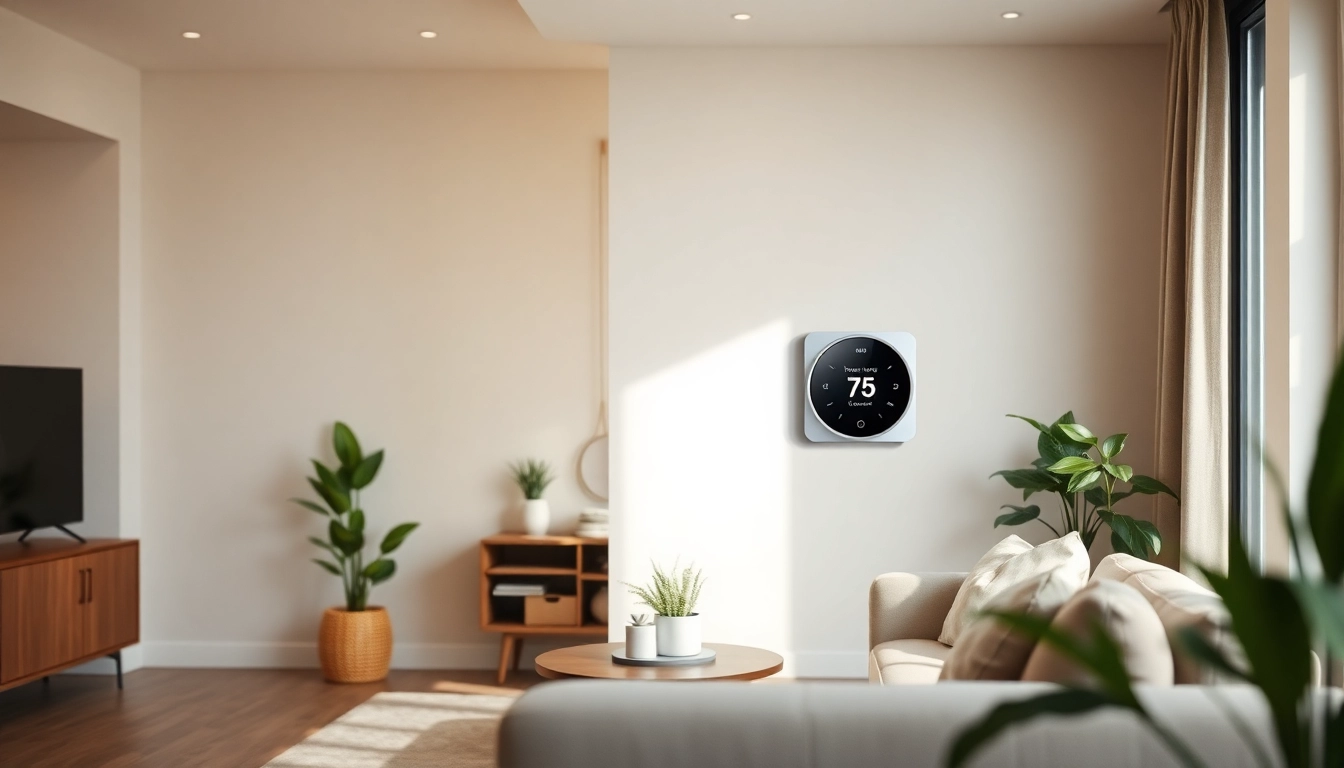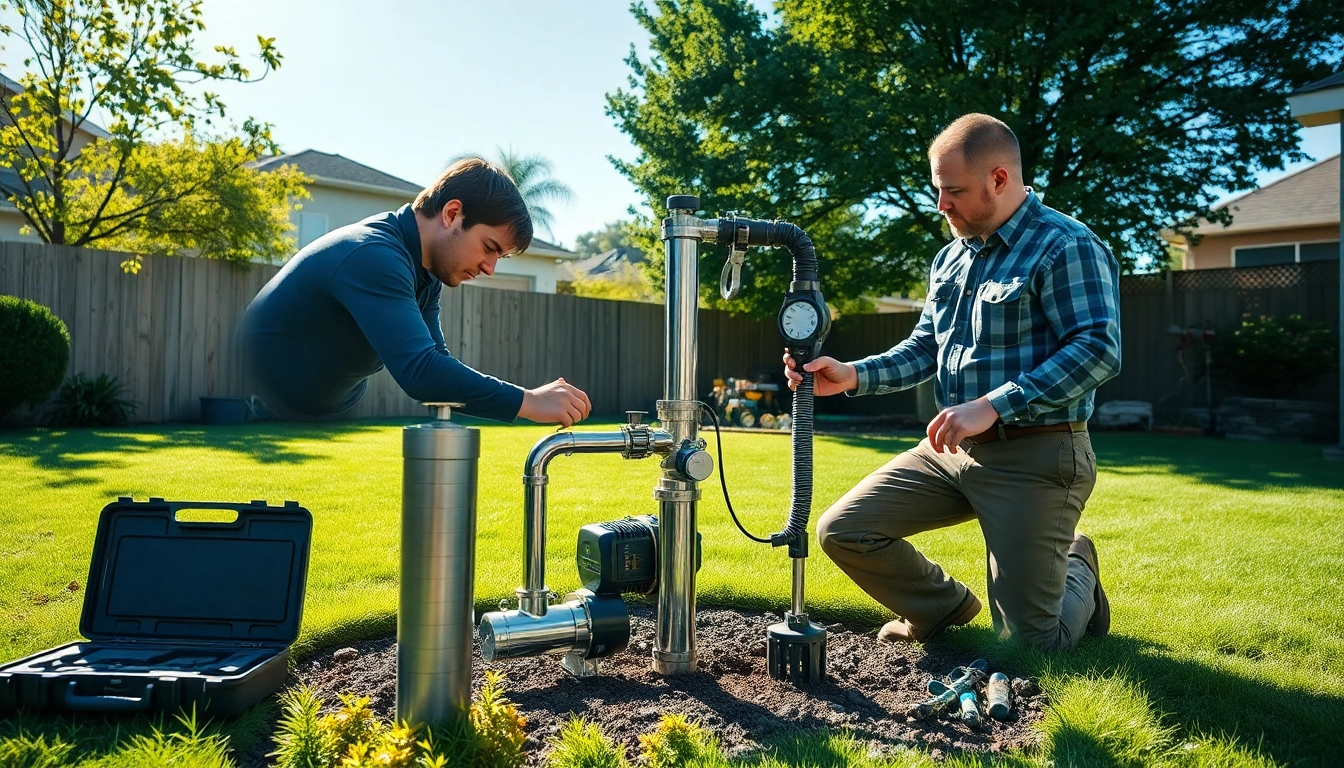Understanding WiFi Thermostats
What is a WiFi Thermostat?
A WiFi thermostat is a modern heating and cooling system controller that allows homeowners to manage their indoor climate remotely using a smartphone, tablet, or computer. Unlike traditional thermostats, which require manual adjustments, WiFi thermostats connect to the internet and can be controlled from anywhere with an internet connection. This technology brings convenience to energy management in homes, allowing for real-time monitoring and adjustments based on the homeowner’s preferences.
How Does the Best WiFi Thermostat Work?
The best WiFi thermostats combine sensors, algorithms, and internet connectivity to optimize home temperature management. They communicate with your HVAC system, making adjustments based on predefined schedules or real-time data about occupancy and outside weather conditions. Many modern models utilize machine learning to adapt to your habits—for instance, learning when you typically leave home so it can adjust the temperature accordingly to save energy. This means that as you are away, your heating and cooling systems manage themselves efficiently, resulting in lower energy bills and increased comfort.
Benefits of Using a WiFi Thermostat
- Energy Savings: Homeowners can save significant money on energy bills, typically around 8% annually, by utilizing energy-efficient settings.
- Remote Access: Monitoring and adjusting your home’s temperature from anywhere enhances convenience and control.
- Smart Features: Integration with home automation systems and features like geofencing make it easy to maintain optimal conditions without manual intervention.
- Data Insights: Many WiFi thermostats provide usage reports allowing users to analyze their heating and cooling patterns, assisting in further energy savings.
Top Features to Look for in the Best WiFi Thermostat
Energy Efficiency and Savings
When choosing a WiFi thermostat, energy efficiency should be a primary consideration. Look for models that are ENERGY STAR certified, ensuring they meet strict energy efficiency guidelines set by the U.S. Environmental Protection Agency. Features like programmable schedules, adaptive learning, and real-time energy usage alerts contribute substantially to energy savings.
Smart Home Integration Capabilities
The best WiFi thermostats integrate seamlessly into smart home ecosystems, allowing for voice and app control through platforms like Google Assistant, Amazon Alexa, or Apple HomeKit. This ensures that your thermostat works in harmony with other smart devices in your home, enhancing the overall automation system.
User-Friendly Interfaces
An easy-to-use interface is paramount for effectively managing your home’s climate. Look for WiFi thermostats with intuitive touchscreens, clear display options, and mobile app functionalities that allow you to make changes on the go. Navigation should be straightforward to accommodate all household members, regardless of their tech-savviness.
Comparing the Best WiFi Thermostat Models
Leading Contenders: Nest vs. Ecobee
When discussing the best WiFi thermostats, two names frequently come up—the best wifi thermostat models are typically the Google Nest Learning Thermostat and the Ecobee Smart Thermostat Premium. The Nest Thermostat is popular for its user-friendly design and excellent learning capabilities, automatically adjusting based on your schedule and habits. In contrast, the Ecobee offers additional features, such as its SmartSensor, which detects occupancy in different rooms and adjusts the temperature accordingly. Reviews often indicate that while Nest is straightforward and efficient, Ecobee provides a more comprehensive solution for larger homes or homes with varying temperature needs.
Budget-Friendly Options
If you’re looking for a WiFi thermostat that offers great value without breaking the bank, several budget-friendly options are available. Models like the Sensi Touch Smart Thermostat and the Honeywell Home T9 provide essential features at a fraction of the price of premium models. These thermostats may not have all the bells and whistles of higher-end equivalents, but they often offer solid performance, integration with smart home systems, and excellent user reviews.
Professional Reviews and Ratings
Consulting expert reviews and ratings can help you make an informed decision. Sites such as CNET, PCMag, or Consumer Reports provide thorough testing results and comparisons, helping consumers identify the best models according to specific needs, whether for energy savings, convenience, or integration capabilities.
Installation and Setup of WiFi Thermostats
DIY Installation Guide
Installing a WiFi thermostat is often a straightforward DIY project. To get started, you will need basic tools like a screwdriver and potentially a drill. Most manufacturers provide detailed instructions specific to their models, which typically include the following steps:
- Turn off the power to your HVAC system to ensure safety.
- Remove your old thermostat carefully, noting where the wires connect.
- Connect the wiring to the corresponding terminals on your new WiFi thermostat.
- Mount the thermostat on the wall and turn the power back on.
- Follow the setup instructions provided within the accompanying app to connect the thermostat to your WiFi network.
For visual learners, many manufacturers also offer installation videos on platforms like YouTube to guide you through the process more effectively.
Professional Installation: When is it Needed?
While most homeowners can manage installations on their own, certain scenarios may warrant professional help, such as:
- If any wiring issues are present or if you’re using a multi-zone heating and cooling system.
- If you are uncomfortable with electrical work or feel uncertain about the installation process.
- When integrating more complex smart home systems that may require expert knowledge.
In such cases, hiring a qualified HVAC technician can save you time and prevent potential damage to your system.
Troubleshooting Common Installation Issues
Even with the best planning, you may run into issues during installation. Common problems include:
- No Power: If the thermostat doesn’t power on, ensure that the circuit breaker is turned on.
- Inaccurate Readings: If the temperature readings seem off, reposition the thermostat to a better location, away from heat sources or drafts.
- Connectivity Issues: Make sure you have a stable WiFi connection. Consider moving your router if the signal is weak.
Most issues can be resolved by following troubleshooting tips in the user manual or accessing support forums dedicated to your specific thermostat brand.
Maximizing the Performance of Your WiFi Thermostat
Programming Smart Schedules
To get the most out of your WiFi thermostat, utilize its ability to set smart schedules. Many models allow you to create customized cooling and heating profiles based on your daily routine. For example, you can program the thermostat to increase the temperature while you’re at work and cool down the house just before you return home. Additionally, utilizing vacation modes can further optimize your energy usage.
Utilizing App Features
Take advantage of the smartphone app associated with your WiFi thermostat. Features such as remote temperature adjustments, energy usage reports, and alerts for temperature changes provide valuable data that can help you maintain your desired comfort levels while also saving on energy costs.
Maintenance Tips for Longevity
Ensuring that your WiFi thermostat lasts for many years entails regular maintenance. Some best practices include:
- Changing the air filter in your home’s HVAC system regularly to prevent dust and allergens from affecting performance.
- Cleaning your thermostat’s sensors and screen to ensure accurate readings.
- Updating your thermostat’s firmware through the app to benefit from new features and security updates.
By following these maintenance tips, you can prolong the life of your WiFi thermostat while also creating an energy-efficient home.


